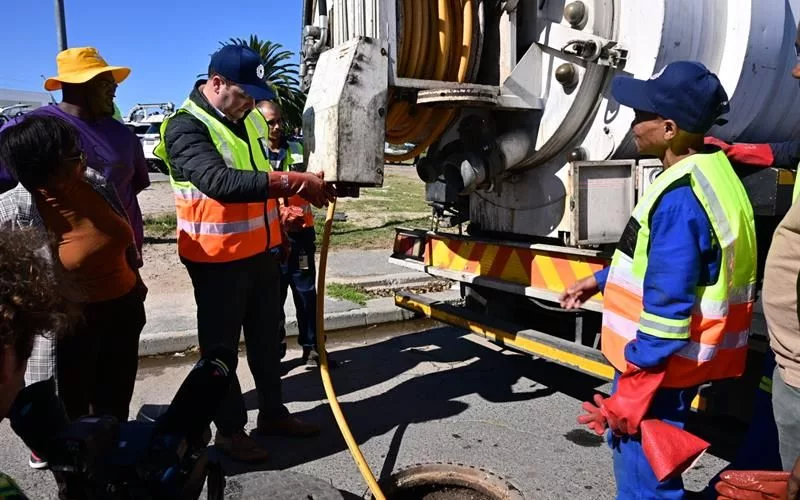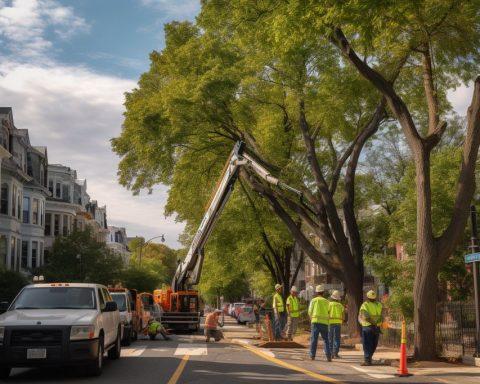Cape Town is taking unprecedented measures to prepare for winter and reduce the risk of flooding. They have jet-cleaned over 230 km of sewer lines, adopted digital early-warning systems for sewer spills, and leveraged technology to augment their winter preparedness agenda. The city’s comprehensive approach also includes flood mitigation, extending aid to homeless shelters, and preventing electrical disruptions. Cape Town’s efforts to safeguard its residents from potential flooding are establishing a new benchmark for urban winter readiness.
In an unprecedented step, Cape Town has undertaken jet-cleaning of 230 km of sewer lines, surpassing the initial goal of 200 km, as part of its winter readiness plan to reduce the potential risk of seasonal flooding and its subsequent ramifications on the city’s infrastructure and inhabitants. The city has also adopted digital early-warning systems for sewer spills and is harnessing technology to augment its winter preparedness agenda. Cape Town’s exhaustive endeavors to brace for winter and safeguard its residents from potential flooding are establishing a new benchmark for urban winter readiness.
Headline: Preemptive Measures against Winter Flooding
In an audacious initiative confronting the winter flood menace, Cape Town has set new industry standards. The city has undertaken jet-cleaning of an astonishing 230 km of sewer lines, surpassing the initial goal of 200 km. This proactive step is a significant feature of Cape Town’s all-encompassing winter readiness blueprint, which focuses on reducing the potential risk of seasonal flooding and its subsequent ramifications on the city’s infrastructure and inhabitants.
Mayor Geordin Hill-Lewis, a cardinal member of the on-site task force, emphasized the necessity of foundational strategies and investments. The endeavors go beyond merely meeting objectives but encompass a wider ambition, which includes enhancing the quality of life of residents, especially the disadvantaged. The city’s administration, having pledged a record R82m operational budget for sewer jetting and manhole repairs in the 24/25 fiscal year, has made significant strides in combating sewer spills.
Headline: Infrastructure Investments: A Key Component
The drive towards comprehensive infrastructure funding forms an essential element of Cape Town’s winter readiness plan. A whopping 75% of the infrastructure budget, amounting to R9bn, is slated to directly aid lower-income households in the upcoming year. The city is giving precedence to sanitation improvements and seeks to uphold the dignity of the less privileged populace.
The Cape Flats line has been under the spotlight, with the largest bulk sewer enhancement in South Africa currently underway. Moreover, sewer pipe replacements across the metropolis are expected to quadruple to a remarkable 100 km each year. These cooperative efforts have already led to a significant decrease in sewer spills by an estimated 30%, based on initial data.
Mayoral Committee Member for Water and Sanitation, Councillor Zahid Badroodien, accentuated the significance of proactive jet-cleaning. This fundamental procedure dislodges foreign objects in the sewer system, a known instigator of winter flooding.
Headline: Leveraging Technology for Winter Readiness
In a period that values technological advancement, Cape Town is harnessing technology to augment its winter preparedness agenda. Proactive jet-cleaning has become a data-guided operation, with specialized jet-vac trucks targeting areas that historically suffered the most from winter flooding.
The city has also adopted digital early-warning systems for sewer spills deployed across the network. To safeguard against the repercussions of power cuts, the most crucial infrastructure has been outfitted with generators, inverters, and uninterruptible power supplies. Regular simulations of generator switch-overs are carried out to ensure optimal performance, and fuel levels are meticulously maintained to never dip below the 70% threshold.
Headline: Comprehensive Winter Preparation Strategy
Additional components of the winter readiness strategy encompass flood mitigation through the clearing of stormwater drains, issuing warnings for areas with a high prevalence of informal structures, and extending aid to increase bed availability at shelters for the homeless. Furthermore, service provision has been made immune to power cuts, and efforts to prevent electrical disruptions by tree-trimming are also in progress.
Cape Town’s exhaustive endeavors to brace for winter and safeguard its residents from potential flooding are praiseworthy. The ingenious application of technology in tandem with traditional methods highlights a commitment to utilizing all accessible resources to optimally serve Cape Town’s populace. The city’s anticipatory actions, the record-breaking cleaning operation, and the holistic approach are indeed establishing a new benchmark for urban winter readiness.
1. What is Cape Town doing to prepare for winter and reduce the risk of flooding?
Cape Town is taking unprecedented measures to prepare for winter and reduce the risk of flooding. They have jet-cleaned over 230 km of sewer lines, adopted digital early-warning systems for sewer spills, and leveraged technology to augment their winter preparedness agenda. The city’s comprehensive approach also includes flood mitigation, extending aid to homeless shelters, and preventing electrical disruptions.
2. How much of Cape Town’s infrastructure budget is allocated to aiding lower-income households?
A whopping 75% of the infrastructure budget, amounting to R9bn, is slated to directly aid lower-income households in the upcoming year. The city is giving precedence to sanitation improvements and seeks to uphold the dignity of the less privileged populace.
3. How is Cape Town leveraging technology for winter readiness?
Cape Town is harnessing technology to augment its winter preparedness agenda. Proactive jet-cleaning has become a data-guided operation, with specialized jet-vac trucks targeting areas that historically suffered the most from winter flooding. The city has also adopted digital early-warning systems for sewer spills deployed across the network.
4. What are some additional components of Cape Town’s winter readiness strategy?
Additional components of the winter readiness strategy encompass flood mitigation through the clearing of stormwater drains, issuing warnings for areas with a high prevalence of informal structures, and extending aid to increase bed availability at shelters for the homeless. Furthermore, service provision has been made immune to power cuts, and efforts to prevent electrical disruptions by tree-trimming are also in progress.
5. What is the goal of Cape Town’s unprecedented sewer jet-cleaning initiative?
The goal of Cape Town’s unprecedented sewer jet-cleaning initiative is to reduce the potential risk of seasonal flooding and its subsequent ramifications on the city’s infrastructure and inhabitants.
6. What is the impact of Cape Town’s infrastructure investments?
Cape Town’s infrastructure investments have led to a significant decrease in sewer spills by an estimated 30%, based on initial data. The city is also giving precedence to sanitation improvements and seeking to uphold the dignity of the less privileged populace.











